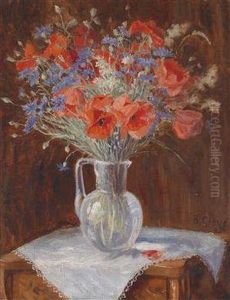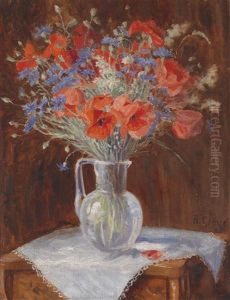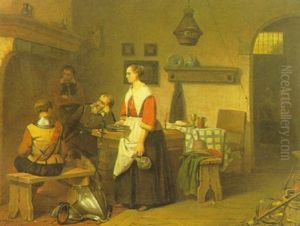Hedwig Greve Paintings
Hedwig Greve was a German-born artist whose life and work were primarily based in Latin America, especially in Central America. Born on February 6, 1860, in Germany, Greve's early life in Europe is not extensively documented, but it is known that she moved to Central America as a young woman, where she became an influential figure in the cultural and artistic scenes of countries such as El Salvador.
Greve's artistic career spanned several decades, during which she engaged in painting, drawing, and teaching. Her style was primarily influenced by European artistic traditions, which she blended with Latin American themes and motifs. Her works often depicted landscapes, portraits, and scenes of daily life, reflecting her keen observation of the environments and people around her. Greve's art provided a unique perspective on the region during a time of significant change and development.
In addition to her work as an artist, Hedwig Greve also contributed to the cultural life of Central America through her role as an educator. She taught art and inspired a generation of young artists, sharing her knowledge and skills with students who would go on to shape their own artistic paths. Her legacy as a teacher is perhaps as profound as her contributions as a painter.
Hedwig Greve's influence extended beyond her immediate surroundings. Her work was recognized and exhibited in various countries, allowing her to gain international exposure. Despite this, much of her life and work remain relatively unknown to the wider art historical canon, and her contributions have only recently begun to be more thoroughly researched and appreciated.
Greve passed away on August 21, 1934. Today, her work is considered an integral part of the art history of Central America, and her paintings can be found in private collections and museums across the region. Her life and art continue to be subjects of interest for scholars and art enthusiasts looking to understand the cultural exchanges between Europe and Latin America during the late 19th and early 20th centuries.


